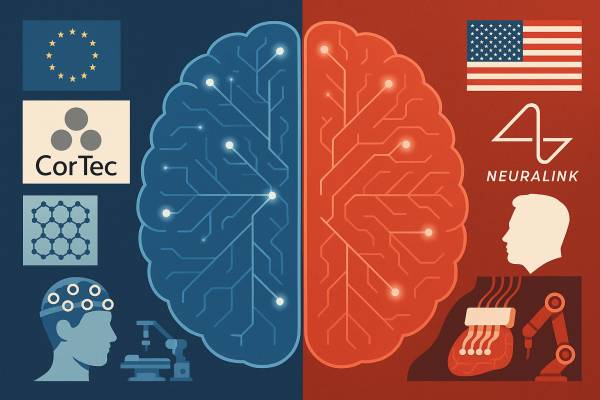As more and more devices connect to the internet and demand grows for instant, high-bandwidth applications such as cloud-based gaming, video calls, and smart homes, the efficient operation of wireless networks is becoming an increasingly serious challenge. The problem is further exacerbated by the fact that the wireless spectrum—the available frequency band—is limited. In their search for a solution, engineers are increasingly turning to artificial intelligence, but current systems are often slow and energy-intensive. A new development that brings data transmission and processing up to the speed of light could change this situation.
A research team at MIT has created a photonic chip that is not only faster but also much more energy-efficient than today's digital AI systems. The device, called MAFT-ONN (Multiplicative Analog Frequency Transform Optical Neural Network), is capable of classifying wireless signals in nanoseconds – about a hundred times faster than current digital technologies. The breakthrough is that the chip uses light instead of electrical signals for calculations, making it not only faster but also less energy-intensive and easier to integrate into small, battery-powered devices.
The research, published in the journal Science Advances, is not only of theoretical significance. The MAFT-ONN architecture is particularly promising for future 6G networks. A key component of such systems is so-called “cognitive radio,” which is capable of real-time recognition of radio signals and automatic adjustment of their parameters. This can make data transmission more efficient and stable, even in crowded or rapidly changing network environments.
The operation of MAFT-ONN differs radically from that of conventional digital AI processors. Most current solutions process wireless signals by first converting them into image form and then running them through deep neural networks specialized in image processing. Although this method is accurate, it requires a great deal of computing power and energy. MAFT-ONN, on the other hand, processes signals directly in the frequency domain, i.e., before they are converted into digital signals. This not only results in faster operation but also significant energy savings.
One of the research team's technical innovations was that a single MAFT-ONN device is sufficient for all layers of the optical neural network. They were able to perform both the linear and nonlinear calculations required for deep learning in a single pass using light. The efficiency of the operation is ensured by a technique based on photoelectric multiplication, which enables high-precision and fast calculations with up to 10,000 neurons in a single device.
The reliability of the system is also supported by test results: the chip was able to classify signals with 85% accuracy in a single measurement, and by combining multiple measurements, this rate rose to over 99%. All this with a response time of 120 nanoseconds – orders of magnitude faster than the micro- or millisecond operation of the most advanced digital systems.
The future applications of the new chip go far beyond telecommunications. Autonomous vehicles, for example, could respond immediately to changes in their environment, and medical devices such as pacemakers could monitor a patient's condition in real time. All this while the device remains small, does not overload the battery, and does not require a constant data connection to the cloud.
The researchers' next goal is to expand the system's capabilities. Among other things, they are investigating how the MAFT-ONN architecture could be applied to more complex AI models, such as transformer-based language models, which currently can only be run efficiently in large data centers. To this end, they are also testing new multiplexing techniques that would allow the system to perform multiple calculations in parallel.
Although still under development, the technology has already attracted considerable interest from industry and the scientific community. The project was supported by the US Army Research Laboratory, the US Air Force, MIT Lincoln Laboratory, the Japanese telecommunications company NTT, and the US National Science Foundation. This clearly shows that strategic and industrial players also recognize the potential of this research.
MAFT-ONN is therefore not only a technological marvel, but also a possible answer to the challenges we face – it could form the basis for systems that are not only fast and accurate, but also sustainable. The convergence of AI and photonics is no longer a thing of the future, but part of the present.





























